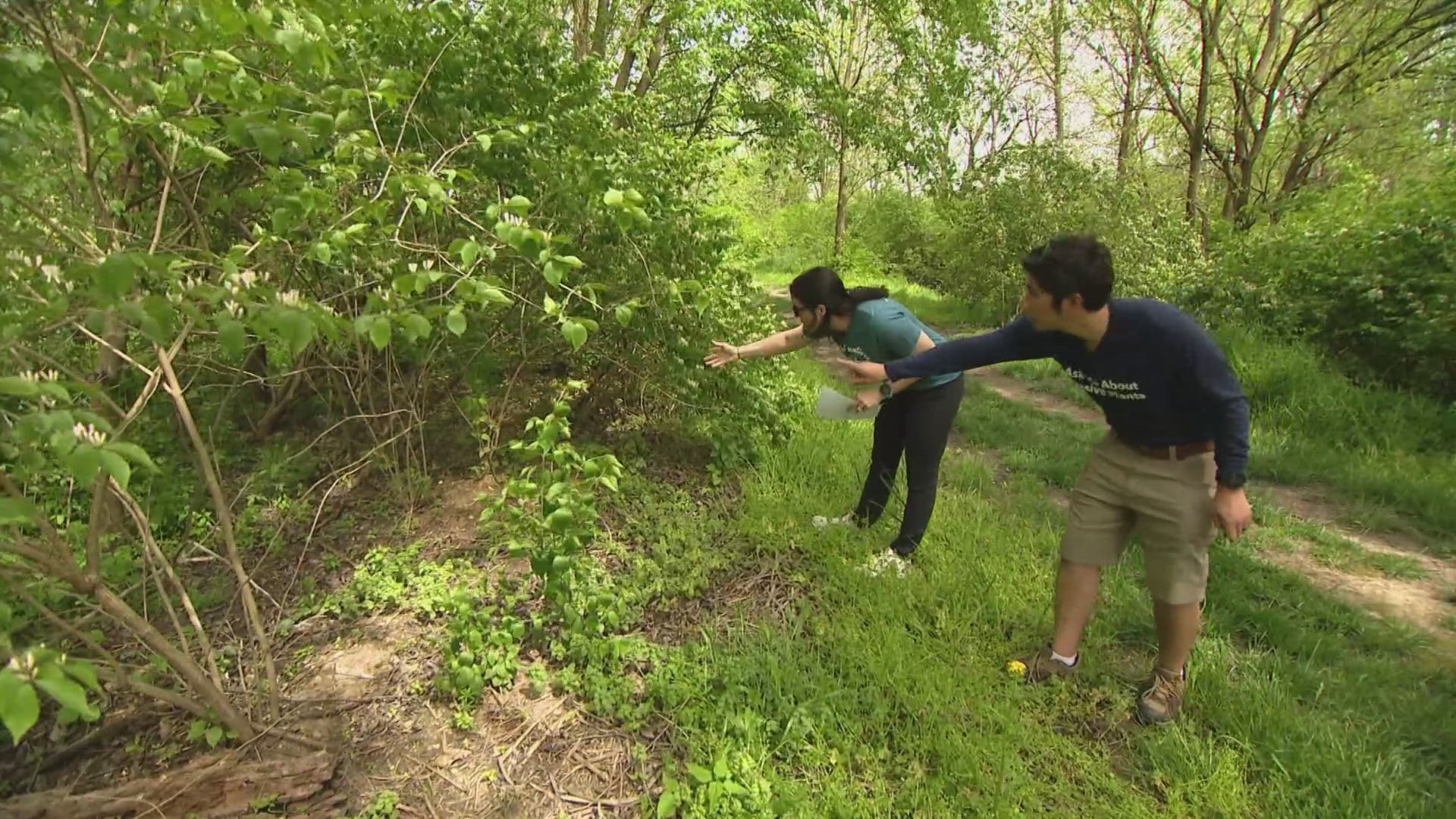INDIANAPOLIS — If you are looking to remove invasive species from your home, you could get help paying for the work.
Hamilton County Soil and Water Conservation District and Hamilton County Invasives Partnership are offering a cost-sharing program to incentivize private landowners to remove the plants and trees. The money comes from a Clean Water Indiana Grant.
Hamilton County resident Robert Gomez is applying so he can chip away at the acres of Amur honeysuckle in his neighborhood park. The canopy-like species is killing everything below its branches.
Gomez said it is a multi-year project that is already paying off.
"It's nice to see what's hiding behind all the invasives," Gomez said. "I've seen some maples start to come up and mayapples and elderberries."
The application process starts with a required site visit. That is when a program representative comes out to establish a management plan. While the plan is free, funds are not guaranteed.
Here's a link to the application.
Once the work wraps up and receipts are submitted, the grant is given out. The payment is considered taxable income, so recipients will get a 1099 at tax time.


Claire Lane, Hamilton Co. Soil and Water Conservation District urban conservationist and Hamilton County Invasives Partnership coordinator, said the payment is for half of a project up to $4,000.
"It can compensate people who hire a contractor to come in and work on a project, or a homeowner or a homeowners' association that is doing the work themselves," Lane said.
Almost anyone in Hamilton County can apply for the funds.
"It's open to private landowners and organizations like homeowners' associations, churches," Lane said.
The deadlines are quarterly: June 1, Sept. 1, Dec. 1 and March 1.
If you have the full application completed by May 31, your application would be considered during the review process in early June, and you would have your result by the end of June. If you applied by June 2, the application would be considered in the next cycle, which would be reviewed in September.
Hamilton County also offers a tree trade-in program to help with invasive landscaping, including the spring-like Bradford Pear.
If you show proof you chopped some down, they will give you a native replacement in the fall. That application deadline is Sept. 5.
If you let non-natives flourish, Lane said they will disrupt Indiana's ecosystem.
"A really common example is the monarch butterfly. For its caterpillars to go through its life stages, it has to have milkweed. So as milkweed is eliminated, or potentially replaced by invasive plants, there's no milkweed. There's no monarch butterflies," Lane said.
While cost-sharing programs are uncommon, your county may offer educational resources or site visits through its Soil and Water Conversation District.
Removing invasive species is vital so our native species can come back home again to Indiana.

